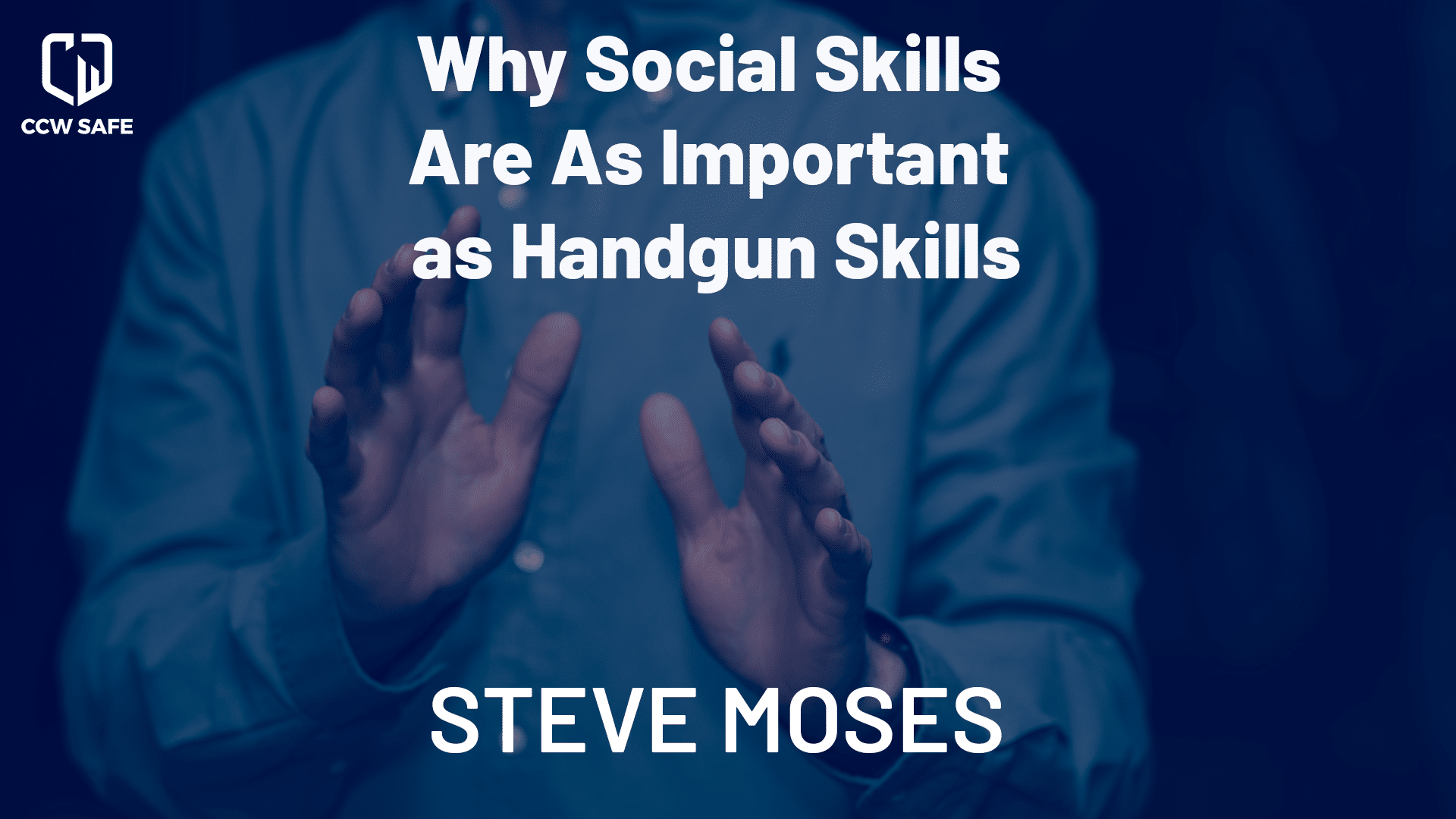
Posted on August 18, 2025
Why Social Skills Are As Important As Handgun Skills
By: Steve Moses
There is nothing to gain and everything to lose by entering into an argument with another person. Simply keeping one’s mouth shut and managing distance is all that might be needed to avoid getting involved in a fist fight or, even worse, a gun fight. There may be a tendency for some armed defenders to stay in place because they made a decision to “stand their ground” because it is their right, reluctance to appear weak, or because he or she does not know what else to do and “freezes.” Two of the most important tactical skills we can use is movement to preserve distance and not get emotionally mud-sucked into a verbal disagreement. This means that we consciously engage the “rational side” of the brain in spite of any urging on behalf of the “emotional” side to defend our ego and not show weakness.
Some armed defenders believe silently in staying place and waiting for the offending party to finish yelling, cursing, threatening, or “trash-talking” and then walk away is a good plan. This is especially risky when the distance between both parties involved occurs at normal conversation distances. A polite attempt to de-escalate the situation only works if the antagonistic party is willing to be de-escalated, and not all of them are. It is not uncommon when one person’s attempt to goad another into a fight fails and they attack anyway.
An armed defender who observes activity on the part of another individual (or individuals) that differs from the norm might be best served by immediately increasing their distance and if need be defaulting to an existing script.
Some training schools teach blocks of instruction on managing unknown contacts and known contacts with questionable intent whose motivation may be robbery, road rage, sexual assault, or interpersonal conflict. The prevailing theme is the same: the armed defender perceives the other party as a potential threat, but an assault has yet to be launched. Persons who may be potential threats may be unknown contacts who use deception in the form of questions for directions, requests for money, or pleas for assistance in an effort to get close enough to overpower their intended victim or produce a weapon and threaten deadly force if the intended victim does not comply. Other threats may be those persons who make no effort to use ruse as they close, and instead are trash-talking, apparently agitated, or even silent.
I am an advocate of immediately increasing distance from those persons by either moving in an arc or laterally and asking them to stay back. I like using phrases like “sorry, can’t help you”, or “do you mind staying back?” If the approaching party instead continues to encroach I can pick up my pace and firmly tell the other party that they need stay back. I do it in a tone that sound more like a warning as opposed to a direct command. If that fails and other person continues their encroachment I can issue then a loud command such as “Stay Back!” and immediately leave the scene if I can, or prepare to defend myself if I cannot
It is always important to remember that as armed defenders we literally have the power of life or death over others. Is bringing a handgun into play a proportionate response to the current potential threat? Unless the armed defender believes that the other party has the immediate ability, opportunity, and intent to sexually assault, kidnap, rob, seriously injure, or kill him or another person that they want to protect then that answer is going to always be no. A trained armed defender who can quickly draw from concealment and competently shoot from a retention position is less likely to overreact and be charged with brandishing or aggravated assault for threatening another person who did not represent a legitimate deadly threat.
A saying that I read once said “violence is never the answer until it’s the only answer.” Armed defenders should take that to heart.